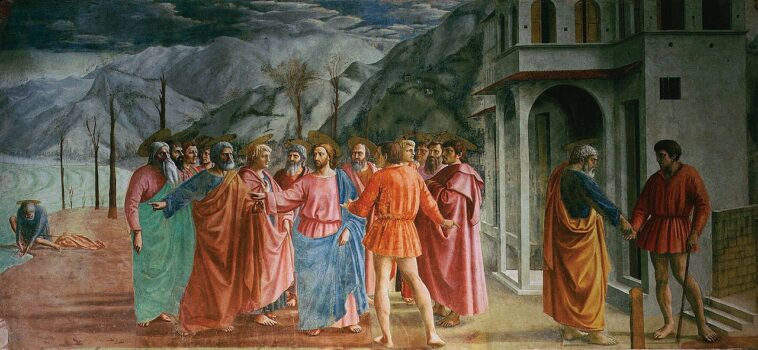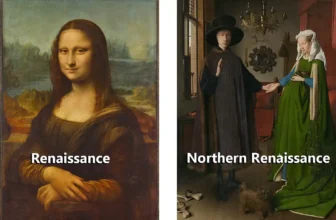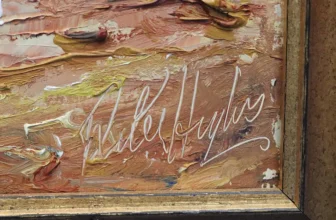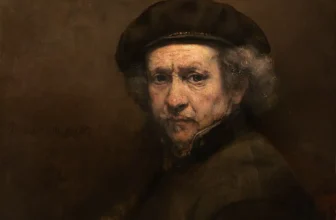The Tribute Money Fresco by Masaccio: A Deep Analysis and Interpretation
Masaccio’s The Tribute Money is one of the most iconic and pivotal works of the Early Renaissance, painted around 1425 as part of a fresco cycle in the Brancacci Chapel in the Church of Santa Maria del Carmine in Florence, Italy. Celebrated for its revolutionary use of perspective, light, and narrative cohesion, this fresco captures a biblical scene with both theological depth and human realism. This analysis delves into the content, symbolism, stylistic innovations, and cultural significance of The Tribute Money, offering a comprehensive understanding of its enduring influence in art history.
Overview of The Tribute Money Fresco by Masaccio
Masaccio painted The Tribute Money as part of a larger series illustrating the life of Saint Peter. The fresco depicts a passage from the Gospel of Matthew (17:24-27), where Jesus instructs Peter to find a coin in the mouth of a fish to pay the temple tax. What distinguishes this fresco is its simultaneous narrative: the story unfolds across three different moments within a single unified composition.
The central scene shows Peter and Jesus being confronted by a Roman tax collector. Christ, calm and authoritative, gestures to Peter, instructing him to find the money in the fish. To the left, Peter is seen at the lake retrieving the coin from the fish’s mouth. On the right, Peter pays the tax collector. The spatial coherence of the scene and the emotional gravity of the characters represent a groundbreaking shift in art from medieval abstraction to Renaissance realism.
Symbolism and Theological Interpretation
The fresco is rich in Christian symbolism and theological nuance. The event is not only a miracle story but also a commentary on the relationship between the sacred and the secular. Jesus’s directive to Peter emphasizes obedience to civic duties while underscoring the divine provision and authority.
- Tribute as a Metaphor: The payment of the temple tax can be interpreted as a metaphor for the dual obligations of Christians, to God and to earthly authorities. Jesus’ acknowledgment of the tax underscores the idea of lawful governance, while the miraculous method of payment reaffirms divine supremacy.
- Saint Peter’s Role: Saint Peter is central to this fresco and to the overall Brancacci Chapel cycle. He symbolizes the foundation of the Church and the transmission of Christ’s authority. Peter’s actions, receiving instruction, performing the miracle, and paying the tax, underscore the Church’s intermediary role.
- The Fish and the Coin: The fish is an ancient Christian symbol, often associated with Christ himself. The coin from the fish’s mouth symbolizes providence and divine intervention in human affairs. This small detail bridges the spiritual with the material world.
- The Tax Collector: The figure of the tax collector, clothed in contemporary Florentine attire, is an implicit reminder to the viewer of civic responsibility. His inclusion situates the biblical story in a context that resonates with Masaccio’s contemporaries.
Artistic Style and Innovations
Masaccio’s The Tribute Money represents a turning point in the evolution of Western art, marking the beginning of the Renaissance emphasis on realism, perspective, and human emotion.
- Use of Linear Perspective: Masaccio employs linear perspective with a vanishing point at Christ’s head, drawing the viewer’s eye to the focal point of the composition. This innovation enhances the three-dimensionality of the scene and reinforces Christ’s central role.
- Chiaroscuro and Light: The fresco demonstrates an advanced use of chiaroscuro, contrast between light and dark, to model the figures realistically. Masaccio’s mastery of light gives the figures volume and presence. The lighting in the fresco appears consistent with the actual light source of the chapel, grounding the sacred scene in the viewer’s reality.
- Human Emotion and Naturalism: The emotional expressions and bodily gestures of the figures are rendered with unprecedented realism. Each apostle exhibits a unique reaction, confusion, concern, contemplation, adding psychological depth to the narrative.
- Spatial Unity: Despite depicting three distinct moments, the composition maintains spatial and thematic unity. Masaccio’s innovation lies in integrating these moments fluidly within a continuous landscape, enhancing narrative clarity without losing visual cohesion.
Context and Historical Background
Masaccio painted The Tribute Money during a period of intellectual revival in Florence, influenced by humanism and a renewed interest in classical antiquity. The Renaissance was characterized by a focus on individual experience, empirical observation, and the study of ancient texts and art forms. These themes are evident in the fresco’s realistic treatment of space and the human form.
Masaccio collaborated with Masolino da Panicale in the Brancacci Chapel, but it was Masaccio’s contributions that revolutionized fresco painting. Tragically, Masaccio died young, at around age 27, but his innovations laid the groundwork for later artists such as Michelangelo and Raphael.
The political climate in Florence also shaped the fresco’s message. The theme of taxation and obedience to authority would have resonated in a city-state frequently grappling with issues of governance, finance, and civic duty.
The Tribute Money Location and Preservation
The Tribute Money is located in the Brancacci Chapel, within the Church of Santa Maria del Carmine in Florence, Italy. The chapel is considered a cornerstone of Renaissance art and attracts scholars and visitors from around the world.
Over the centuries, the fresco suffered from damage, soot, and neglect, but restoration efforts, particularly in the 1980s, have helped to recover much of Masaccio’s original brilliance. The cleaned and preserved fresco now offers viewers a clearer view of its colors, composition, and technical mastery.
Narrative Structure: What is Happening in the Fresco?
The narrative is split into three parts:
- The Central Scene: Christ is approached by the tax collector. Peter, slightly behind Christ, receives the instruction to find the coin.
- The Left Scene: Peter kneels at the lakeside and extracts a coin from a fish’s mouth, fulfilling Christ’s miraculous command.
- The Right Scene: Peter gives the coin to the tax collector, completing the transaction and satisfying the civic obligation.
This storytelling technique, called “continuous narrative”, was not new but had never been executed with such seamless spatial and temporal logic. The coherence of the scene, despite showing three different times, allows viewers to follow the story naturally.
Visual Composition and Elements
Masaccio’s composition is carefully structured:
- Christ at the Center: Serving as the visual and thematic anchor, Christ’s gesture sets the narrative in motion.
- Architectural Elements: The presence of classical architecture, such as columns and arches, reflects Renaissance admiration for ancient Rome and provides a sense of order.
- Natural Landscape: The inclusion of a realistic landscape enhances the setting’s believability and supports the narrative progression.
- Group Dynamics: The apostles form a semicircle around Christ, directing attention inward and fostering a sense of intimacy and dialogue.
The Tribute Money had a profound impact on the development of Western art. Masaccio’s innovations in perspective, lighting, and narrative structure influenced generations of artists, including Leonardo da Vinci and Michelangelo. The fresco is often cited as an early example of how art can combine theological storytelling with scientific principles of observation and geometry.
Additionally, Masaccio’s humanistic approach paved the way for a more personal, emotionally resonant style of religious art. His work marked a departure from the symbolic and often flat style of medieval painting, embracing a vision of humanity that was intellectual, emotional, and deeply spiritual.
Masaccio’s The Tribute Money stands as a monumental achievement in the history of art. It encapsulates the spirit of the Renaissance, its embrace of classical antiquity, its intellectual rigor, and its reverence for human dignity and divine mystery. Through innovative techniques and profound symbolism, Masaccio transformed a biblical story into a timeless meditation on faith, responsibility, and the human condition. Today, The Tribute Money continues to inspire awe and scholarly inquiry, a testament to the enduring power of art to communicate across centuries.




